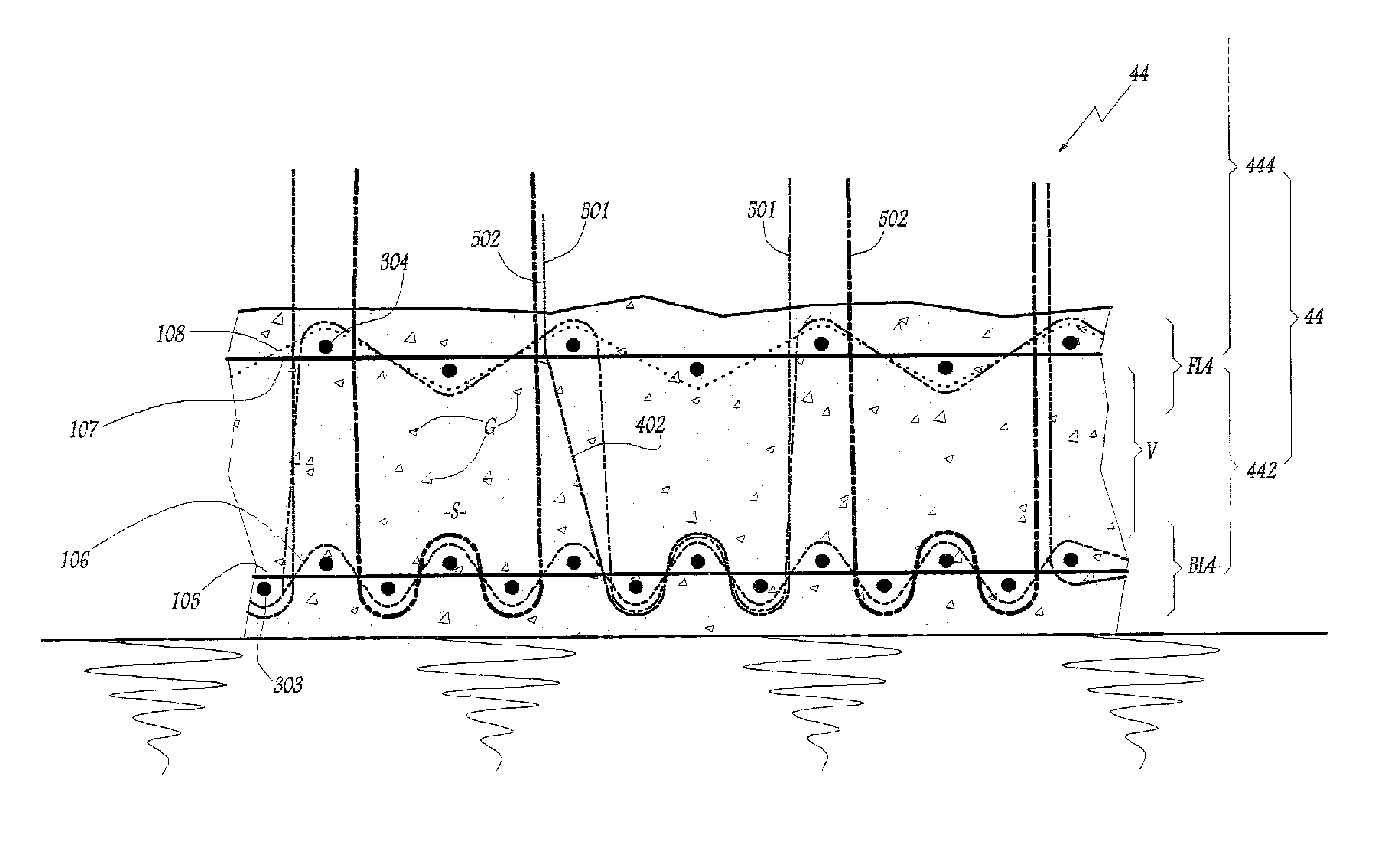Fabrics simultaneously woven from two distance fabrics
a technology of distance fabrics and fabrics, applied in the direction of looms, ways, textiles and papermaking, etc., can solve the problems of difficult to introduce between the layers of each fabric a particulate material such as sand or rubber granulates, and the turf is not elasticity enough to provide elasticity, etc., to achieve the effect of easy production and high productivity
- Summary
- Abstract
- Description
- Claims
- Application Information
AI Technical Summary
Benefits of technology
Problems solved by technology
Method used
Image
Examples
Embodiment Construction
[0041]A face-to-face three rapier sets loom 2 is represented on FIG. 1 and used to produce a double carpet 4 particularly adapted to be used as artificial turf. Carpet 4 is made of an upper distance fabric 42 and a lower distance fabric 44 which are separated, after weaving, by a cutting device 6 which cuts piles extending between the two fabrics. Loom 2 also includes a reed 8 which can be moved between the position represented in full lines and the position represented in dashed lines on FIG. 1. Loom 2 also includes sixteen heddle frames 10 which are moved by electric servomotors 40, such as the ones disclosed in EP-A-1 489 208. On FIG. 1, only four servomotors 40 are represented, for the sake of clarity. All servomotors are controlled by an electronic control unit 50 which includes computation means, in the form of a microchip 52, and a memory 54 accessible by microchip 52.
[0042]Three sets of rapiers, comprising respectively a bringer and a taker, are used in loom 2, namely a top ...
PUM
 Login to View More
Login to View More Abstract
Description
Claims
Application Information
 Login to View More
Login to View More - R&D
- Intellectual Property
- Life Sciences
- Materials
- Tech Scout
- Unparalleled Data Quality
- Higher Quality Content
- 60% Fewer Hallucinations
Browse by: Latest US Patents, China's latest patents, Technical Efficacy Thesaurus, Application Domain, Technology Topic, Popular Technical Reports.
© 2025 PatSnap. All rights reserved.Legal|Privacy policy|Modern Slavery Act Transparency Statement|Sitemap|About US| Contact US: help@patsnap.com



